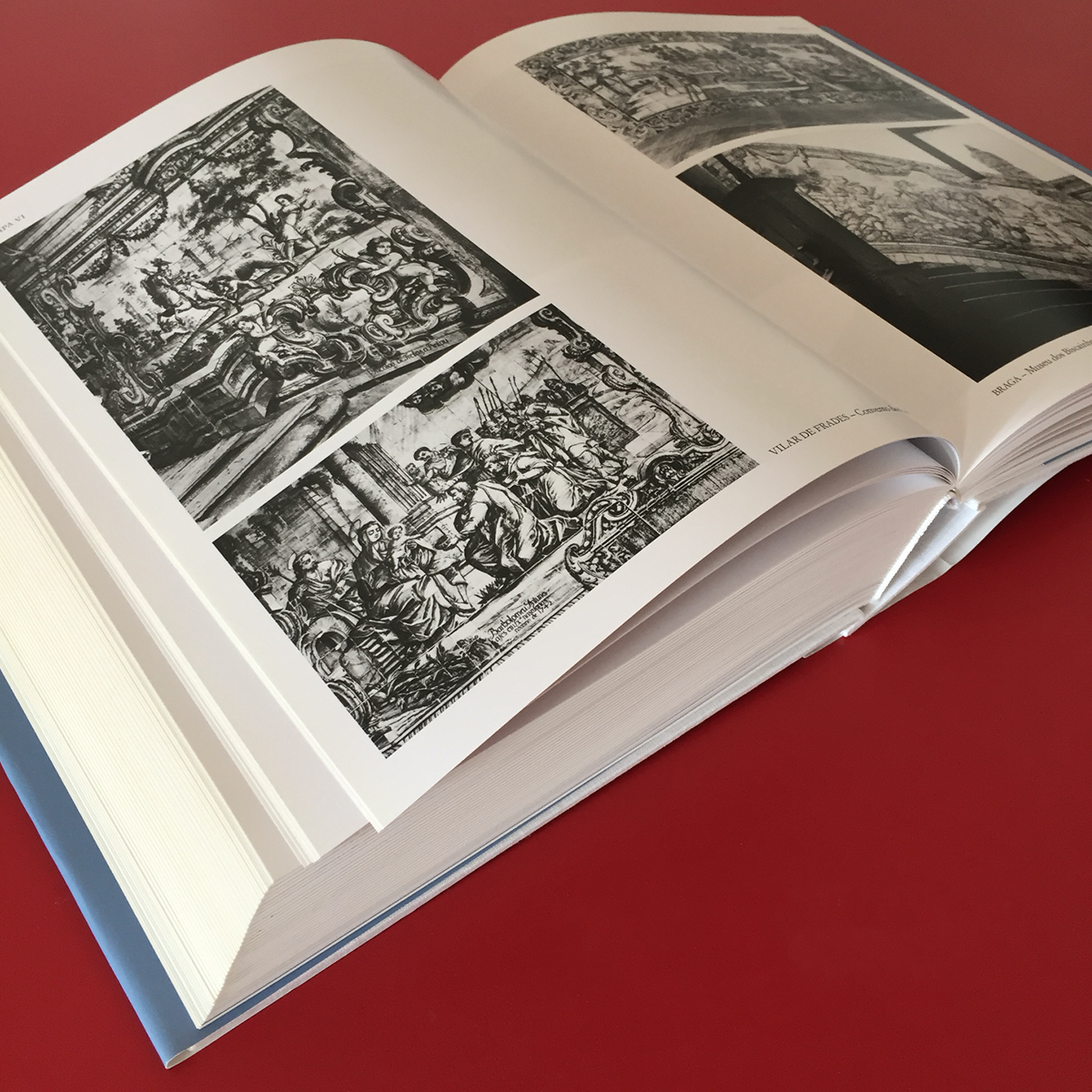
SIMÕES, João Miguel dos Santos – Azulejaria em Portugal no Século XVIII. Lisboa: Fundação Calouste Gulbenkian, 1979.
Inventory of 18th century azulejos in mainland Portugal. Creating iconographic catalogues
Starting date: 2004
Ending date: 2007
This project was financed through Fundação para a Ciência e a Tecnologia – FCT’s 2002 funding call for Research and Development Projects in all Scientific Domains (POCTI/HAR/45609/2002), and Az (formerly RTEACJMSS) was later entrusted with the upload of the data to Az Infinitum.
Principal investigador:
Alexandra Gago da Câmara (UAb)
Principal contractor:
Universidade Aberta – Centro de Estudos Históricos e Interdisciplinares
Participating institutions:
Museu Nacional do Azulejo
Universidade de Évora – Centro de História de Arte
Faculdade de Letras da Universidade de Coimbra – Instituto de História de Arte
Faculdade de Letras da Universidade do Porto – Departamento de Ciências e Técnicas do Patrimonio
Universidade do Algarve
Researcher team:
Fausto Santos Martins, Francisco Ildefonso da Claudina Lameira, José Alberto Simões Gomes Machadoo, Maria José P. Ferro Tavares, Nelson Correia Borges, Pedro Dias, António Celso Huyady Mangucci, Inês Isabel Mateus da Silva Feliciano, Jorge Manuel de Oliveira Rodrigues, Paulo Henriques, Teresa Campos
Summary:
Used in monumental works since the 16th century, and especially popular during the 18th century, the azulejo is a central part of Portugal’s artistic culture, bearing witness to the country’s unique heritage tradition. More than a form of architectural decoration, employed to model and homogenize built surfaces, it amounts to a major artistic practice, capable of conveying different ideas through the use of images.
The study of this art form requires a systematic work method, which entails the inventory of azulejos both as single ceramic pieces and as part of an architectural ensemble. This inventory enables researchers to raise questions concerning the azulejos’ origin, their historical evolution and their decorative and iconographic roles, among others, which can help situate this cultural practice within the country’s wider artistic landscape.
A very important work tool was hereby established, of great use to art historians, whether or not specialized in ceramics, as well as to conservators, restorers, curators and researchers working in various fields, from the arts to chemistry. Apart from this work tool, it is also worth mentioning another crucial factor, namely the documentation of the existing heritage, which is essential for its preservation and classification.
Studies based on a systematic inventory were only made possible by João Miguel dos Santos Simões, whose nearly systematic catalogues for the 16th and 17th centuries are still highly topical and frequently quoted. He is also the author of a posthumously published inventory for the 18th century, also useful as a work tool, but with serious and understandable omissions. The 18th century was therefore much less studied, and this gap is all the more serious since it is one of the richest and most fertile periods in Portuguese tile history.
We chose as temporal limits for this inventory the years 1691 – the date of the tile panels of the Chapel of Our Lady of Conception, in Barcarena, Oeiras, one of the first works by Gabriel del Barco, who is the first author of the so-called Master’s Cycle and a major reference for the 18th century – and 1822 – the beginning of Portugal’s constitutional monarchy, and a date that signals both the ending of an aesthetic cycle linked to the 18th century and the advent of new ways of using azulejos, namely on building façades.
Intent on putting together an inventory of azulejos from the 18th century, we have nonetheless decided, for the time being, to limit the project to mainland Portugal, given our current research capabilities. However, we are aware of the importance of extending our survey to the Portuguese islands and Brazil.
Considering the current state of historiographical research and the access to new technologies, we believe this project can lead to the discovery of new methodologies and contents.
[access to the Az Infinitum – Sistema de Referência e Indexação de Azulejo]
